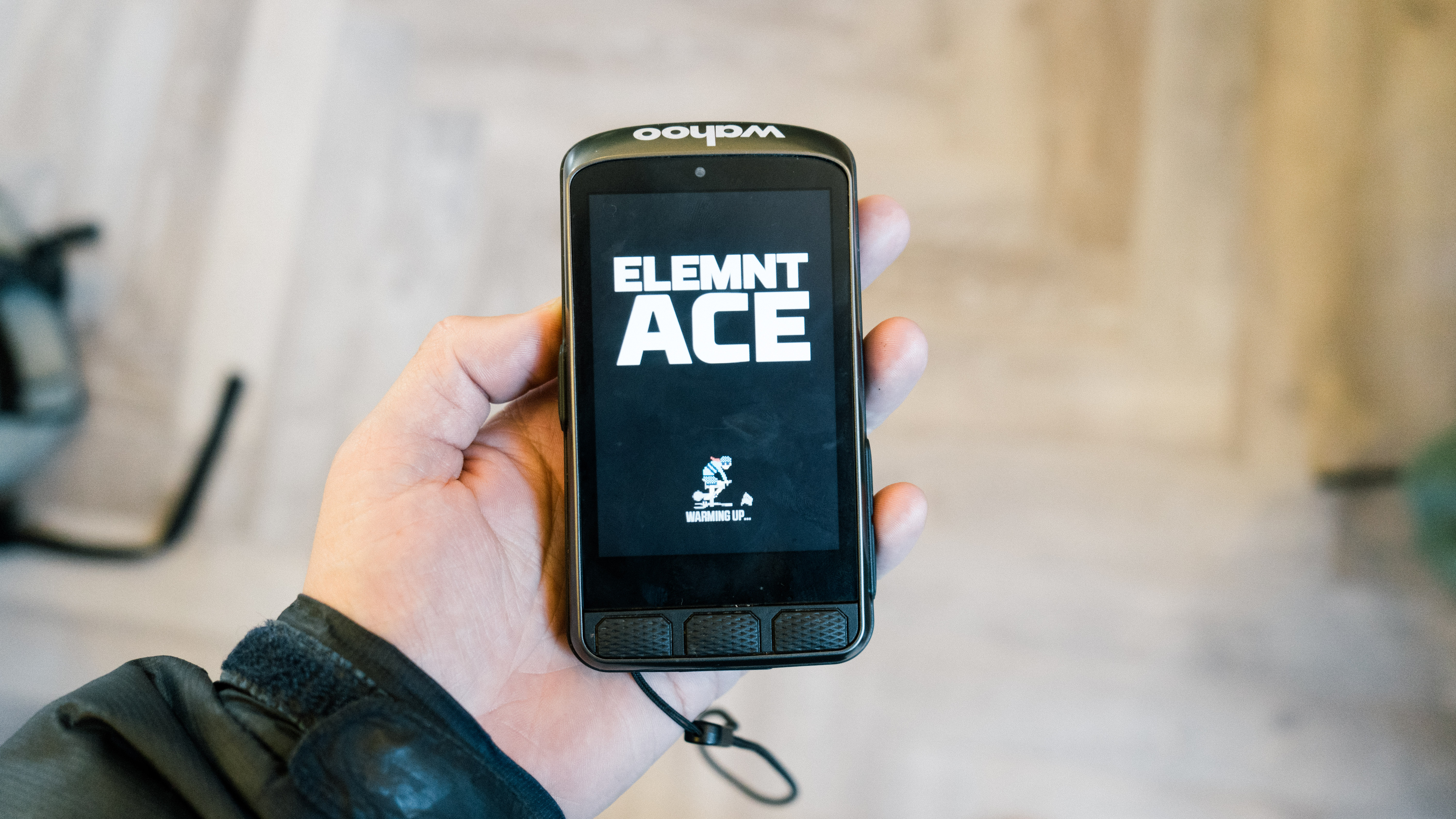
It should come as no surprise to find that today Wahoo has launched a new bike computer, called the Elemnt Ace. It was first spotted on a Reddit forum at the end of October, with some suitable blurry images to keep us guessing as to the specs. A ‘wind sensor’ was listed on the packaging, which was really what got pulses quickening; was Wahoo about to drop real-time aerodynamics into a consumer device, undercutting the likes of Body Rocket? Well, sort of, but not really. I’ll get to the wind sensor in a little while.
I’ve had my hands on the pretty enormous Elemnt Ace for a few weeks now, but thanks to a slightly rocky start in terms of rolling out software updates I haven’t had a chance to get to use all of the features or really get under the skin of it as yet. In due course, I will update this into a full review, but I wanted to at least share with you my findings so far. So that if you are tempted to buy one immediately you have a better idea of what you are getting for your money. The price, by the way, is $599.99/€599.99/£549.99. This makes it the most expensive computer Wahoo makes, and one aimed squarely at being the best bike computer on the market.


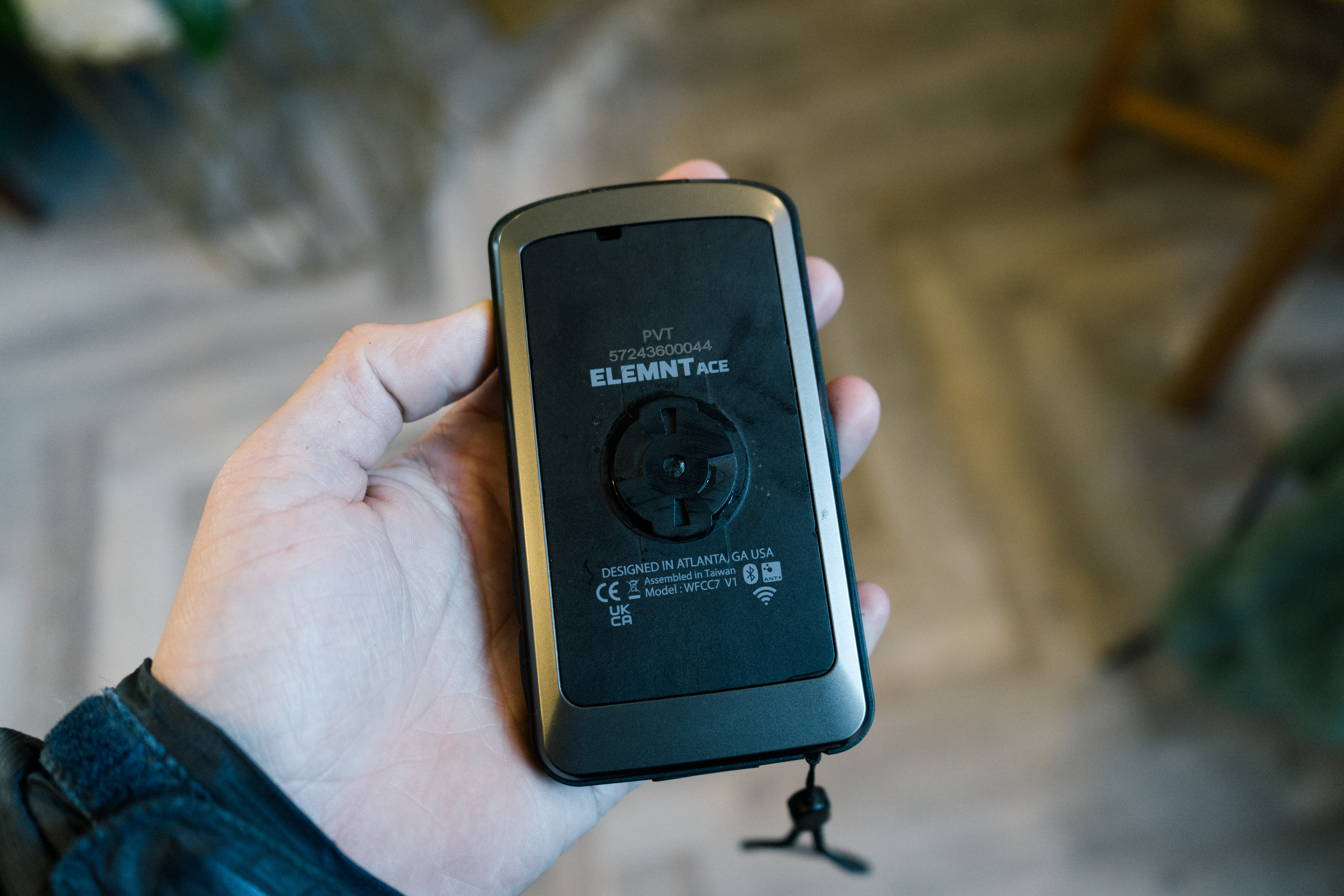
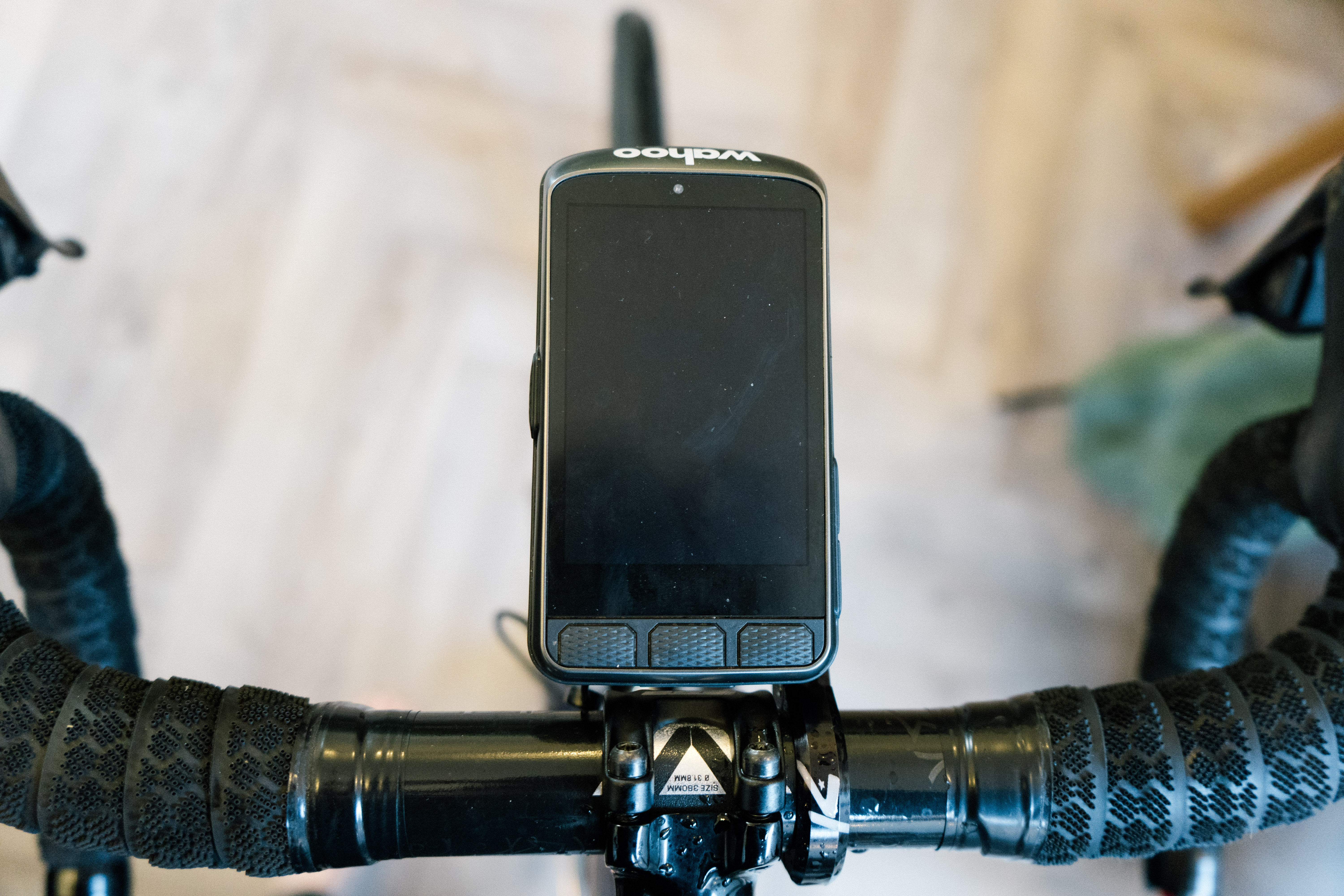
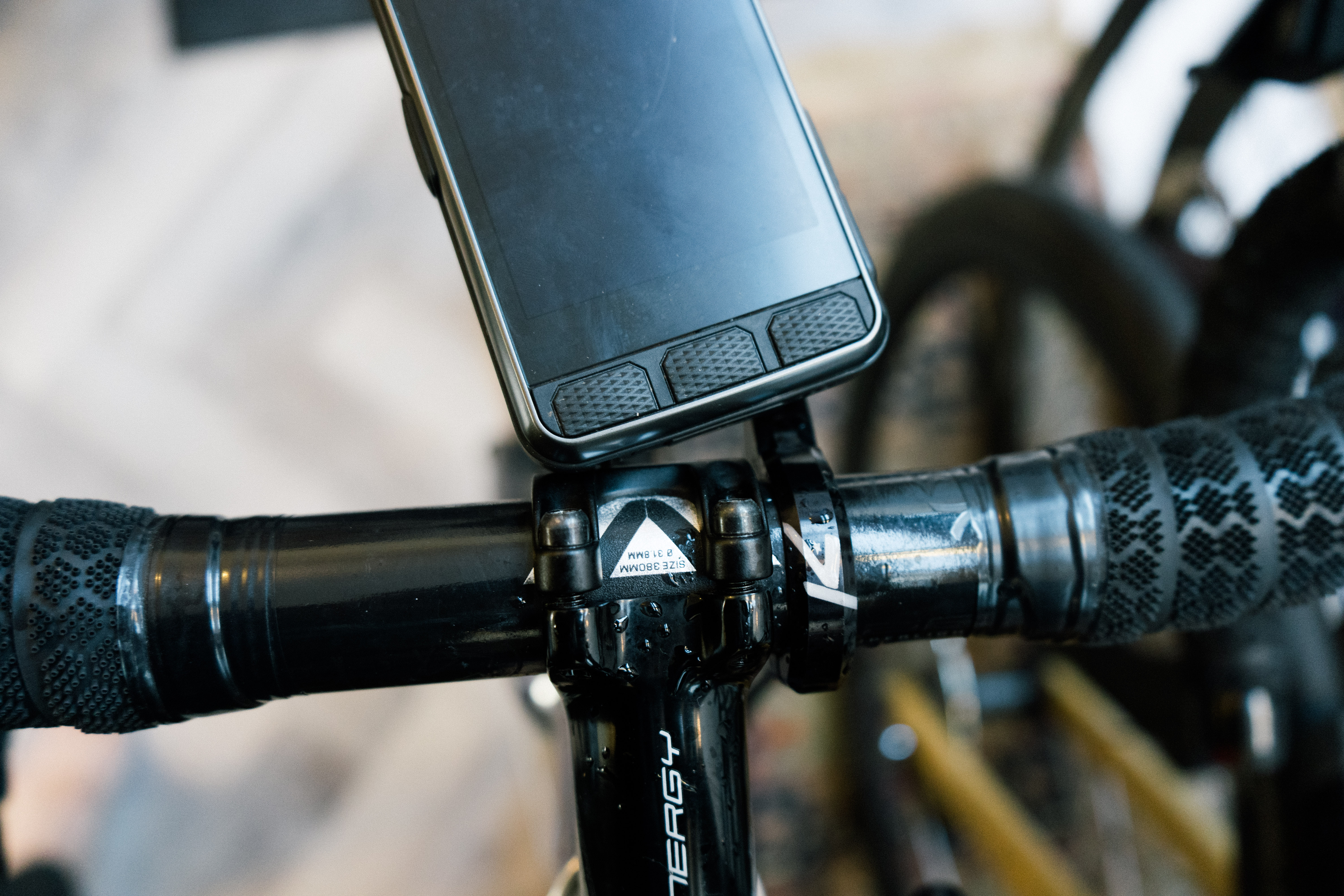
Design, specs, and features
It is massive. The first thing that will grab you, whether in your hand or in photos, is the size of the thing. It’s 69x125x20mm, but in more easy-to-understand language it’s about as big as an early iPod Touch, or early iPhone models. It’s longer than the largest Garmin, the 1050, by 7mm, and wider by 9mm. By my maths, it’s now the largest of the best cycling computers, and it’s the width in the screen that Wahoo are keen to shout about, claiming that it adds greater context to navigation, akin to better peripheral vision.
The giant screen takes up much of the body, and in a first for the brand it is a touchscreen. You still get the same familiar button layout as you do on both the Bolt and Roam models, but the buttons are correspondingly larger too. Glove users will no doubt rejoice, and while I’ll get onto the performance later you can operate it with relative ease even in thick neoprene gloves.
The size also is down to a much larger battery. The Roam boasted a claimed 17 hours of battery, while the Ace can apparently keep on truckin’ for a full 30+ hours. Naturally this larger battery makes the Ace a lot heavier, more than twice the weight of the Roam by my scales, at 210g vs 100g exactly for the Roam V2.
The size also means a new mount is needed. Fortunately, Wahoo has opted for an aluminium unit rather than plastic. I snapped the plastic mount of a Hammerhead once over a pothole and have lost confidence in them for larger computers. K-Edge will also have a compatible aftermarket mount available as of now, but other manufacturers will have some catching up to do for proprietary options. In general, if a Garmin 1050 fits in your mount then the Ace should to. In practice I found it a real squeeze on most of my mounts. Wahoo still says that round bars are the majority of its market, and so the included mount is catering for that, but an adapter plate to shift the computer forwards slightly mightn’t have been a bad inclusion.
Upon firing up the Elemnt Ace you’ll be met with a ‘ready to ride’ screen. Provided you’ve already paired various sensors to the Ace (a heart rate monitor, power meter, your electronic groupset, GoPro, smart lights, Kickr indoor trainer, Headwind fan, that bluetooth enabled fridge you bought last Black Friday, and perhaps the motor hidden in your bottom bracket) the health of each will be displayed on the home screen before you dive into selecting routes. No more worrying how much battery your various devices have, and a much-needed reminder for forgetful chargers like me.
Ok, you’ve been very patient waiting for news on that wind sensor. It is not, I’m afraid, an aero sensor. Or at least not properly. In the front of the Ace are a pair of channels into which air can pass. One houses an air temperature sensor, for reasons that may become more relevant down the line, and one houses an air pressure sensor.
The faster you ride the higher the measured pressure at the front of the device. Wahoo has calibrated the air pressure sensor to your ridden velocity, and so the difference between your measured velocity and the air pressure felt by the sensor gives you ‘Wahoo Wind Dynamics’. In essence, it’ll tell you whether you are experiencing a headwind (Air Drag, in Wahoo parlance), or if you’re drafting, or making use of a lovely tailwind (Air Boost).
These metrics are available on the screen so you can see with easy to read colours whether the air is a friend or foe at any particular point on a ride. It is not a CdA sensor, though Wahoo was quick to point out that the tech in the computer is as good as any on the market so it could be used with existing tech like Body Rocket.



The sensor is protected by a semi-permeable membrane, and while it is waterproof it’s not advised that you stick any hard objects down the holes at the front. You can rinse it to get crud out, and rain ingress may cause inconsistent data, but it is still waterproof. For muddy rides though I’d probably just stick some tape over them.
The uprated air temperature sensor (and by proxy the air density) does point to improved aero analysis down the line, something which the brand didn’t deflect from. Why not include a CdA when you have power, velocity, air temperature and wind velocity already? Essentially because ‘the average cyclist doesn’t understand it’. While it’s true that the difference between a 0.08 and 0.09 in CdA terms may be lost on some riders, there are plenty out there who would understand it and take a keen interest. The numbers of people paying to read our wind tunnel testing of bikes, wheels, and helmets so far is a testament to that, and so to not include this field as an option does feel like an omission. Obviously it wouldn’t be as accurate or precise as wind tunnel work, but even a roughly indicative field would be good.
There are also plenty of features that I either haven’t made use of yet, or aren’t ready yet. These include but aren’t limited to, Strava live segment integration, music integration, control of a Kickr Headwind and Kickr smart trainers, spoken turn-by-turn navigation via the internal speaker, smart light integration, and GoPro control. With the exception of Strava Live Segments all of these should be available as of right now, but the Strava segment integration is lagging somewhat. It will apparently be ready ‘in December’, but with no definite date, but it looks to be a marked improvement on the current segment integration, with live segment overlays over the peripheral areas of your map, along with wind dynamics to show which segments are in ‘Air Boost’ for maximum segment hunting tailwind tomfoolery.




A new app
One key thing to note is that the Elemnt Ace is to be used with the Wahoo app rather than the Elemnt app. Eventually, the Elemnt app will be mothballed I suspect as the Roam and Bolt V2 computers will be brought over to the Wahoo app, the same app where you can control your Kickr trainers, see your historic workouts, and generally do everything else Wahoo. It is much the same in general terms, but crucially it is cloud-based, meaning that if you somehow lose both your Ace and your Phone you can simply restore the setup from a cloud backup stress-free. This cloud infrastructure is also, I’m told, key for the forthcoming Strava live segment integration, presumably allowing you to hop onto live segments without necessarily starring them on your Strava profile first.
Within the app you can setup your computer as you wish, change your screens etc. The mechanics of it are very familiar, but one new feature is having activity profiles. This was lacking in the Elemnt app, and meant that if you wanted to change your screen layout for different riding types you had to do everything manually. Now you can have one for ‘General Riding’ and another for ‘Smashing up hills and feeling sick’, and even a third for ‘Churning out miles indoors’. You can change the titles of these to your liking, but whatever they are will be the associated ride titles on Strava, so bear that in mind before you go for anything too controversial.

Performance so far
Before I go into my thoughts on the Ace so far it is worth bearing in mind that receiving tech pre-release does often present some challenges. Journos are effectively part of the late stage beta testing squad ahead of the full release, and reporting unknown bugs to brands at the eleventh hour isn’t unheard of by any means. That being said my main feelings on the Ace so far is that it doesn’t quite feel finished yet.
Setup was, generally, pretty breezy, but I ran into some interesting hurdles that have at least been ironed out. I have been unable to get mine to control my music, which was one of my favourite features of the Bolt V2, and while there are software updates incoming to not have the marquee feature of updated and improved Strava live segment integration ready for launch seems like a lapse. Wahoo isn’t some little startup with a single beleaguered developer in someone’s garage frantically working on bug fixes, it’s a giant multinational fitness and technology company and I don’t think it’s too much to ask for things to be more or less finished when sold to the general public.
The ready to ride screen is great, and I do love seeing the health of my various peripherals (the fridge is fine, by the way). Having headed out on a ride just before receiving the Ace and having my Di2 die within 15 mins I need no better illustration as to its use. It also shows your heart rate on the screen, so I know now that my pre-ride resting heart rate is far higher than my actual resting heart rate. Must be nerves, I guess.
The user interface on the Wahoo app is more or less as easy as the Elemnt app, but with the addition of activity profiles, which is a great addition. As someone who does a weekly lap of the hills of Bristol it’s so much better to just select my hill climb setup where I see my HR, Power, Grade, and (in an ideal world) the Strava live segments for the key hills.
Navigation is sensational. The extra width in the screen, as well as the much-improved colour space, means wrong turns are much harder to make now. You get so much context regarding your surroundings, and the navigation overlay showing not only the trace of your route, but also the gradient of uphill sections is sublime. The larger elevation profile at the bottom is also great, but the fact that turn cues come up from the bottom and not down from the top regularly occludes it, which is annoying. I prefer to have a route loaded even if I know where I’m going so I have a better elevation trace, and I’d rather lose whatever was on top of the screen, or at least have the option to change it. In any case, the navigation is the easiest to follow of any computer I’ve used, though in discussions with my colleague, Tom, the Hammerhead Karoo likely runs it pretty close.
Navigation is sensational… once it’s found satellite reception. This can take quite some time, up to a few minutes. It’s got to the point where I’ve just given up and rolled out without connecting before, which isn’t something I’ve experienced with most other computers. Just plan a bit ahead and you’ll be ok, but it’s still frustrating.
Even when not navigating the screen itself is brilliant. I have made peace with dim screens in the name of extended battery life, especially in the winter, but even on the dimmest setting the screen is bright and vibrant. Metrics are easily visible, and key colour-coded ones (power, heart rate, and wind dynamics) are more easily seen at a glance as they can be both colour-coded and with a number. The temptation is to fill the giant screen with loads of stuff, but I found that actually somewhat overwhelming, so I reverted back to having fewer, but larger and more easily read metrics. I would, on my old Garmin, have a ‘speed’ screen, and another one for climbs. You can set these up very easily in the app, rather than just having to rank fields and zoom in/out until you see what you want.


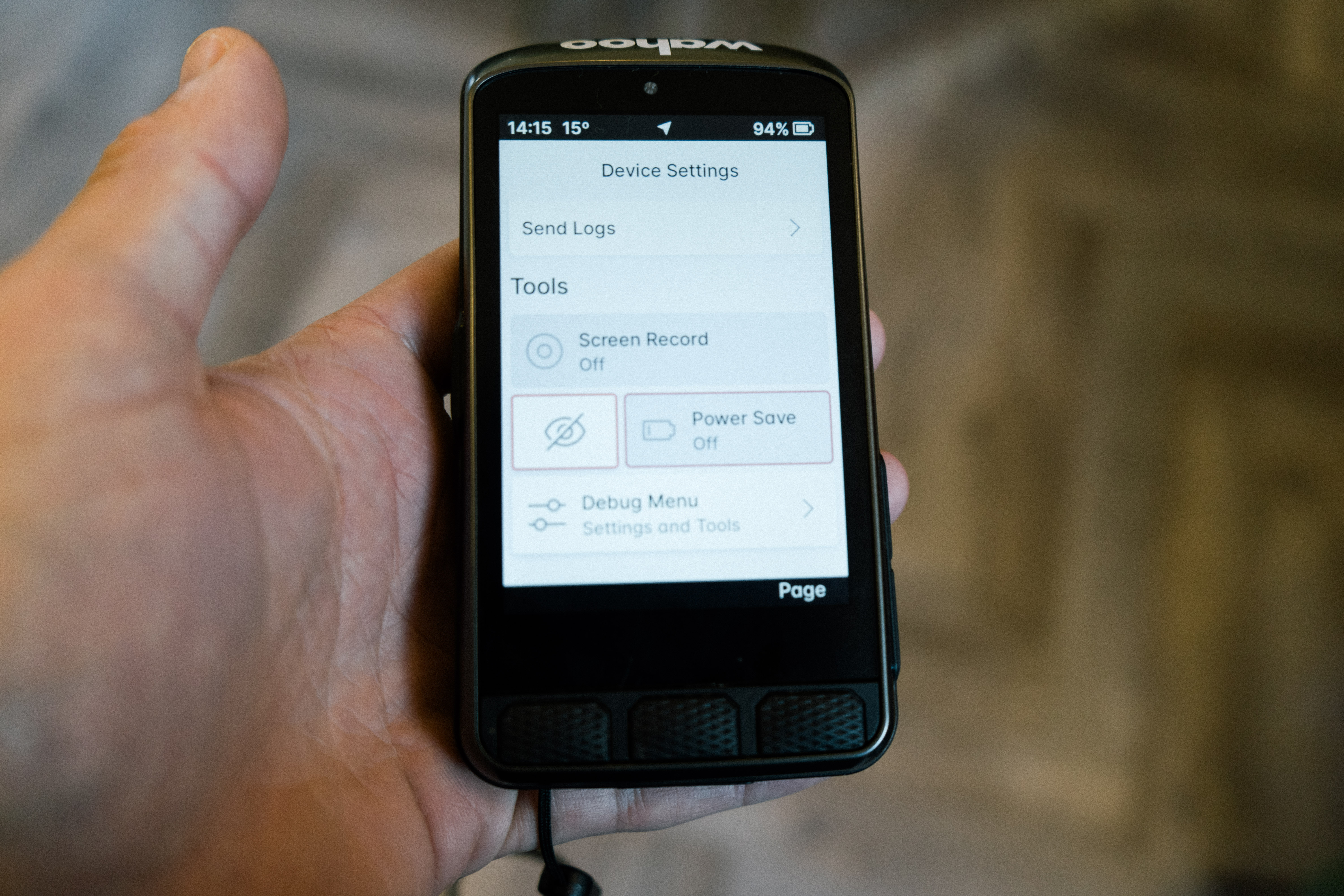



Finally, let’s cover the wind sensor. It is responsive, and it certainly provides another field to pour over in the post-ride washup between raiding the fridge (still fine, thank you for asking) and hitting the shower. You can easily see, both when riding and after you get home, places where you were drafting and places where a headwind was impeding your progress. While riding it is more or less immediately responsive, flicking from dark green to light as you move out from behind a rider, or turning red in sections of maximum headwind.
It is novel, but truth be told even after a couple of weeks it’s not a metric I’ve actually found any use for, and have removed it from the workout pages of some workout profiles. Generally speaking I know when I’m drafting, and I know when I’m experiencing a headwind. As a training aid it could well be useful for riders that tend to live or die by the average speed; a mostly red trace could ameliorate that voice in the back of the head that says you’re suddenly slow, but this doesn’t actually achieve anything that heart rate, or even better power data, doesn’t already do. Wahoo was pretty frank in that it doesn't expect to see the Ace on the start line of any races; the size and weight are an impediment for most pros I’d suggest, but more as a computer for training, and a general use one for consumers. An approximate CdA figure would be more useful so you could improve your aero position on the fly, but like with Strava live segments this may be something we have to wait for.
In short, I do like much of the Ace. I’m sure with continued use, and continued rolling software updates, my experience will improve. If you want a computer that’s easy to use, easy to read, integrates seamlessly with most tech on the market, lasts a long time, and has a decent degree of customisation then you won’t be disappointed. I don’t think you should buy it just because you want the wind sensor.







